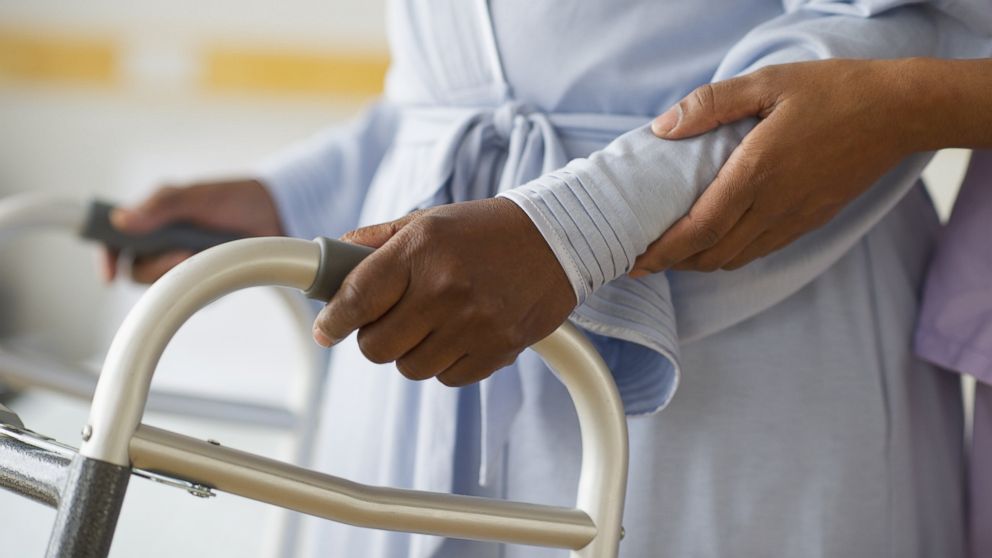'False Beliefs' of Med Students May Lead to Racial Bias in Pain Management, Study Says
The false beliefs may lead to racial bias in pain management, study says.

— -- Some white medical students may have a racial bias that affects how they assess the pain of black patients, according to a new study.
The study, published today in the Proceedings of the National Academy of Sciences journal, builds on a growing body of evidence that has found that when it comes to pain management, black patients are sometimes treated differently than white patients.
Lead author Kelly Hoffman, a psychology doctoral candidate at the University of Virginia, told ABC News that the researchers wanted to understand what factors were at work in exacerbating this difference in how black and white patients are treated.
"For a long time we’ve known there are really large racial disparities in health and health care, in pain management this is really [striking]," Hoffman told ABC News.
The team asked 222 white medical students from the University of Virginia to read two mock medical cases about a black patient and a white patient and then rate their perceived pain on a scale of 1 to 10. They then had the medical students weigh in on statements regarding biological differences between races. These supposed "facts" about biological differences were nearly all fake and included false statements such as "Blacks’ nerve endings are less sensitive than whites'," "Blacks’ skin is thicker than whites'," and "Blacks have stronger immune systems than whites."
Of the 15 statements, four were true. These statements were that black patients were more at risk for heart disease and stroke, had denser bones than whites, and were at less risk to contract spinal cord diseases.
The study authors found that about 50 percent of the medical students thought that one of the fake statements was "possibly, probably, or definitely true."
If a medical student had false beliefs, they were more likely to show a "racial bias" in how they assessed and recommended treating the pain of white and black patients, the study found.
"Participants who endorsed more false beliefs about biological differences between blacks and whites showed a racial bias in the accuracy of their treatment recommendations," according to the study's findings.
The study focused on white medical students to study if there was a bias along racial lines and if white doctors were not able to accurately assess pain of black patients. The researchers also performed the experiment with 106 non-white medical students, but they did not find any of the same correlations they found in the white participants and did not include these findings in the final study.
These preliminary findings may be a first step in understanding why there is a racial bias in pain management, Hoffman said, but she cautioned there needs to be further study. The study found an association between racial bias and believing in these false statements but it did not yet prove this bias is actually caused by believing these false statements. Additionally, the study was done in a laboratory setting and may not reflect what happens to doctors or medical students when they’re in a real hospital with actual patients.
Hoffman said she was still shocked at how many medical students believed in at least one of the false statements.
"Initially we were a little bit surprised at the percent of endorsement among medical residents," Hoffman told ABC News. "Things like black skin is thicker than white. ... It’s just striking for some of the them."
The study authors also found that if medical students did not believe any of the false biological facts, they did not show bias in how they perceived pain in a black or white patient.
In the second part of the study, researchers had 92 lay people undergo the same exercise. In that study, 73 percent of people believed at least one false fact. They found the more a person believed in these false facts the more likely they were to lower pain estimates for black people than for white people.
Dr. Monika Goyal, who published an article last year on racial disparities in pain management in children who had appendectomies, said this kind of study is key in understanding racial bias in health care and finding a way to counteract it.
"My study demonstrated that there were racial differences in outcomes or in treatments [and] this study suggests that there are physician or medical professional biases that may affect care," said Goyal, assistant professor of pediatrics and emergency medicine at Children’s National Health System at George Washington University. She said more study would be needed to fully connect doctors' assumptions and racial biases to how patients are cared for.
She said she was also shocked to see how many medical students believed made-up facts about biological differences between races.
"I think that deserves further investigation," she said of medical students believing false biological facts. "I think that was very surprising to me."




